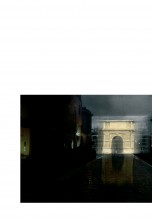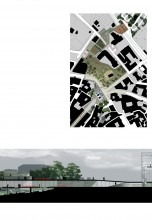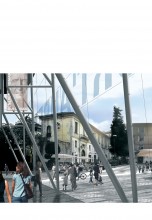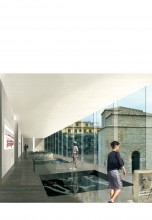In 2003, the City of Benevento launched an international competition to create a new Archeological Park, where the underlying challenge was to connect fragments of the city’s historic heritage, including a prominent Roman Arch perfectly preserved, by creating an identity not based on architectural typology.
The true significance of the Arch is as the “Gate” of a new cultural path, the iconic point of departure for an authentic understanding of the city’s history and heritage. But this symbolic structure had been reduced to a traffic island by poor master planning and waning interest in such an urban spectacle.
Soon after undertaking the design effort, we were confronted by the powerful influence of the urban context of Benevento; a challenge to relate the new to the old, but at the same time to create a building that represents its own age with integrity.
In the firm’s proposal, the new glazed structure “exposes” visitors to the overwhelming beauty of the decoration at the top of the Arch via an aerial bridge. This bridge brings them within close proximity with the monument–something never experienced before. After entering the glass envelope protecting the Arch, the visitors can follow an underground exhibition space to reach the viewing platform floating over the archeological area.
The large openings in the floor allow visitors to see the ruins below. At the same time, they also absorb the surrounding ruins from the windows and the pieces preserved by the museum, view the didactic material on the museum walls and experience the simulated environments in the kiosk system. This multiple experience and simultaneous perception is an attempt to establish the utopian condition where history can be told as a single and simultaneous narrative that shows moments of chronological coincidence, autonomy, influence and convergence.



